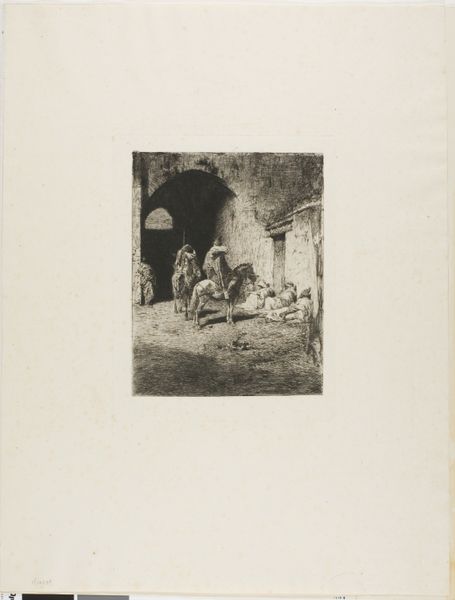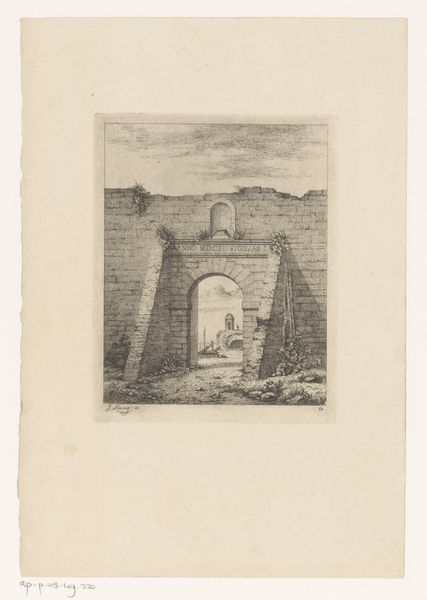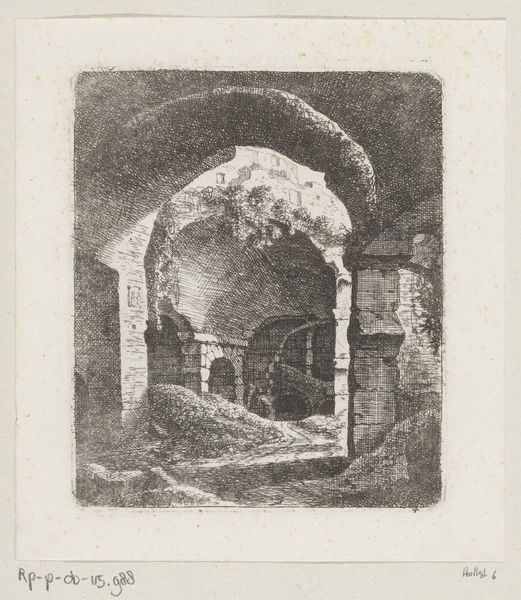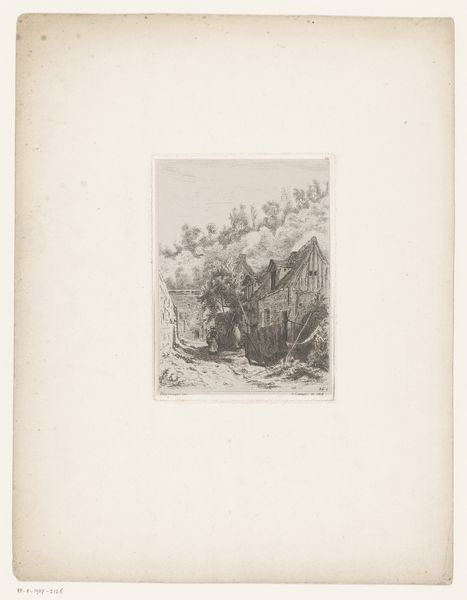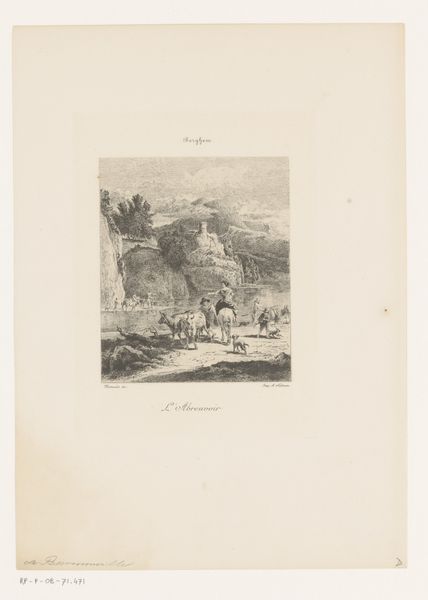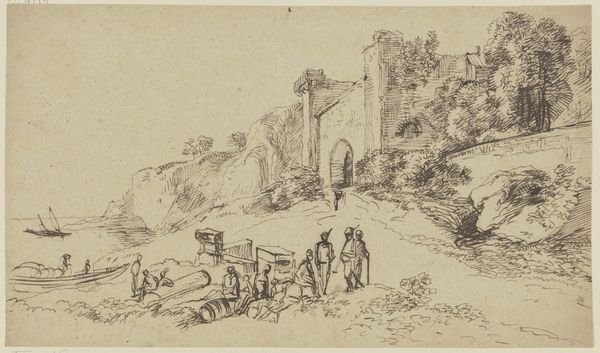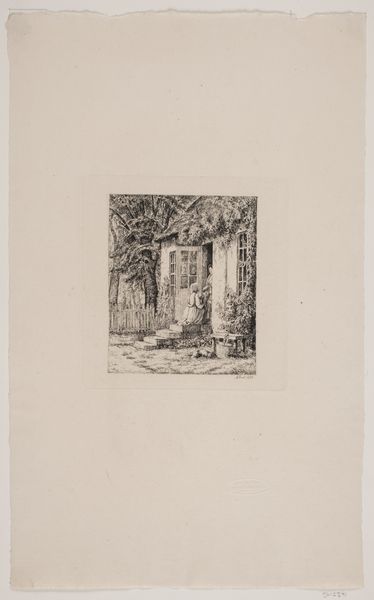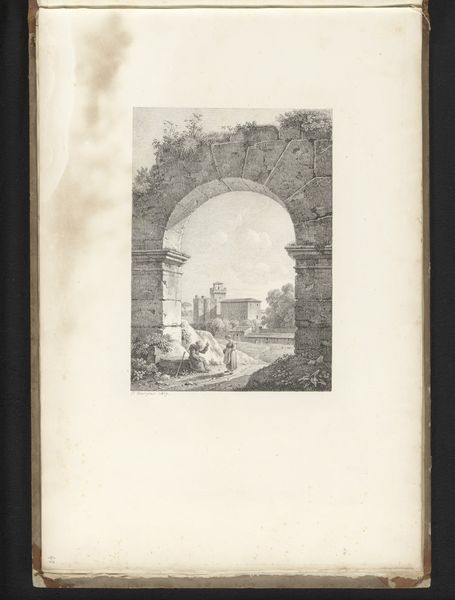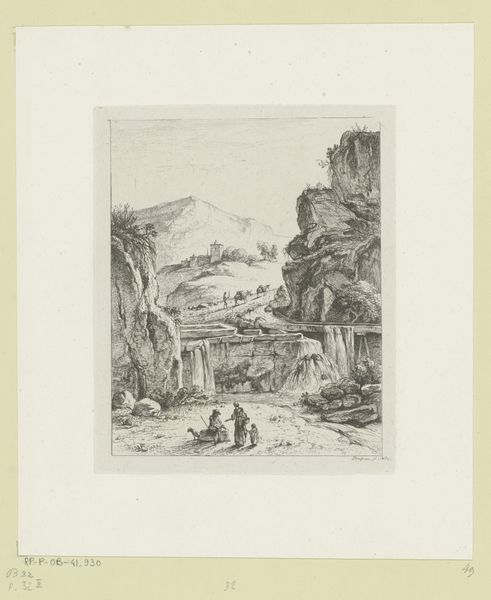
drawing, print, etching, paper
#
drawing
# print
#
etching
#
landscape
#
paper
#
cityscape
Dimensions: 154 × 110 mm (plate); 348 × 245 mm (sheet)
Copyright: Public Domain
Editor: This is "Gate of Orvieto" by Gustav Friedrich Papperitz. It’s an etching on paper. The architectural details against the rugged landscape create a striking contrast, making me wonder about the journey of those figures passing through. What visual cues stand out to you? Curator: The composition, above all, strikes me as a structured dialogue between light and shadow. The linear precision of the etched lines defines the architectural solidity of the gate, while simultaneously evoking a sense of depth through carefully modulated shading. Consider the strategic use of hatching; how does Papperitz employ this technique to define form and texture within the image? Editor: The hatching seems to be denser in the darker areas, giving form to the gate and rocky outcroppings, contrasting against the sky, right? It really pushes the depth. Curator: Precisely. Notice, also, the relationship between the solid geometric forms and the organic textures of the landscape. How does this contrast affect your interpretation of the scene? Editor: I guess it speaks to the tension between human creation and nature’s grandeur... like a meeting place almost. It’s more evident the longer I observe it! Curator: Exactly! Further analysis reveals a subtle balance achieved through the proportional relationships within the work. The gate doesn’t dominate, it almost coexists within its setting. So then, where do we find meaning? Editor: Wow. Seeing how the technical aspects contribute to the bigger picture, that's really interesting! I’m beginning to appreciate it in a whole new light. Curator: Indeed. Sometimes the most profound insights are unveiled through careful, structured observation and consideration of form.
Comments
No comments
Be the first to comment and join the conversation on the ultimate creative platform.
